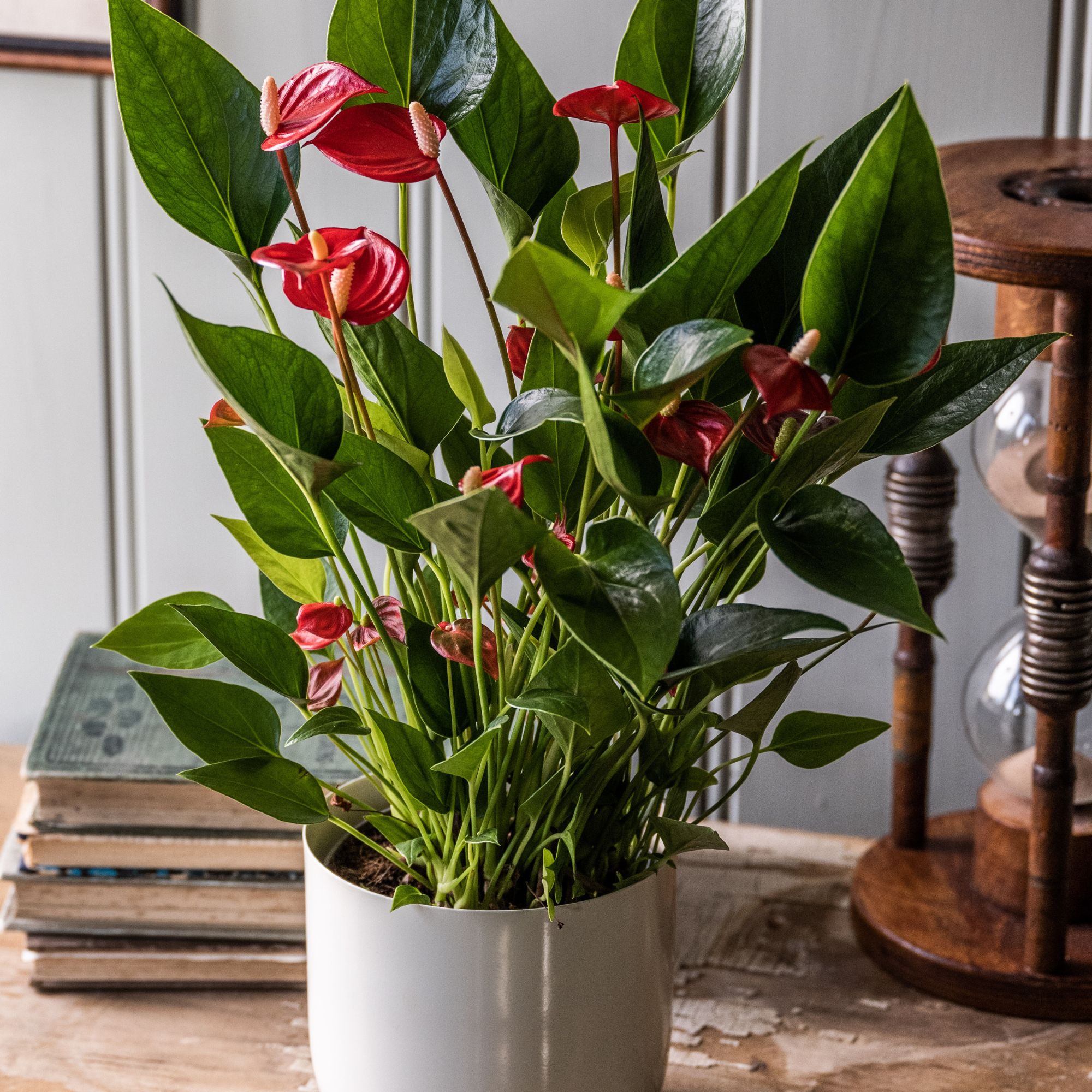
Learning how to care for Anthurium will ensure that this beloved houseplant retains the stunning, long-lasting colours for which it is known.
Anthurium andraeanum is a favourite houseplant ideas for many homeowners – even those who prefer to keep their botanical collection to a minimum.
‘One of the most rewarding houseplants, flamingo flowers are sure to bring a pop of colour to any room,’ says Richard Cale, owner of Leaf Culture. ‘There’s little not to like if you want to introduce a touch of tropical flair to your home.’

How to care for Anthurium
Visually, anthuriums look very similar to peace lilies so it will be little surprise that learning how to care for anthuriums is very similar to caring for a peace lily.
'Anthurium andraeanum is part of the Araceae family and its native range is Columbia to Ecuador. It is the most widely cultivated member of the genus; this is due to how easy it is to care for and how attractive the plant is along with longevity of colour,' says Lisa Price, founder of Root Houseplants.
However, just because it is an easy-to-care-for houseplant – doesn't mean that it doesn't benefit from a few tips and tricks.
What you will need
- Anthurium plant
- Plastic pot with drainage holes – one size larger than the size of the plant bought
- High phosphorous plant food, such as Elixir Gardens High Phosphate Soluble on Amazon
- High nitrogen plant food, such as Chempak High Nitrogen Feed on Amazon
- A small trowel, such as the compact Kent & Stowe Capability trowel on Amazon
- Houseplant compost, for example, Westland Houseplant Potting mix on Amazon
- Grow light – optional – try Garpsen Grow Light from Amazon
- Soil moisture meter – optional – like this Xlux design from Amazon
Where to buy
Anthuriums are very popular houseplants and are available at most garden centres or even supermarkets. However, for something more unusual, look to online nurseries and houseplant specialists. When buying online, however, always make sure you know where to shop online for the best indoor plants to ensure you are purchasing from reputable stockists.
Rather than just boasting one beautiful colour, the spathes of Anthurium 'Karma Duo' combine a soft pink with a lime green edge for a different take on the classic pink variety.
For a darker take, Anthurium 'Black Love' features deep green leaves paired with moody spathes. The spathes begin red before deepening to a dark, almost black, burgundy shade.
If you've fallen in love with the hydroponic growing trend, look no further than this Anthurium ‘Lilli’ from Patch Plants, which is 'planted' in a glass jar rather than soil for a decorative and even more low-maintenance plant.
About anthuriums
Despite their name, the bright blooms of flamingo flowers are not actually flowers. These vibrant waxy ‘petals’ are spathes, designed to attract pollinators to the protruding (and less impressive) flower spike. This is also the case for poinsettias. Common colours include red, pink and white, though more unusual green, black, yellow, green and bi-coloured varieties can also be found.
The fact that its colour comes from spathes, not petals, is one of the reasons that this plant can keep its showy display for months. For this reason, anthuriums are one of the best houseplants to buy in winter and one of the best houseplants to boost wellbeing.
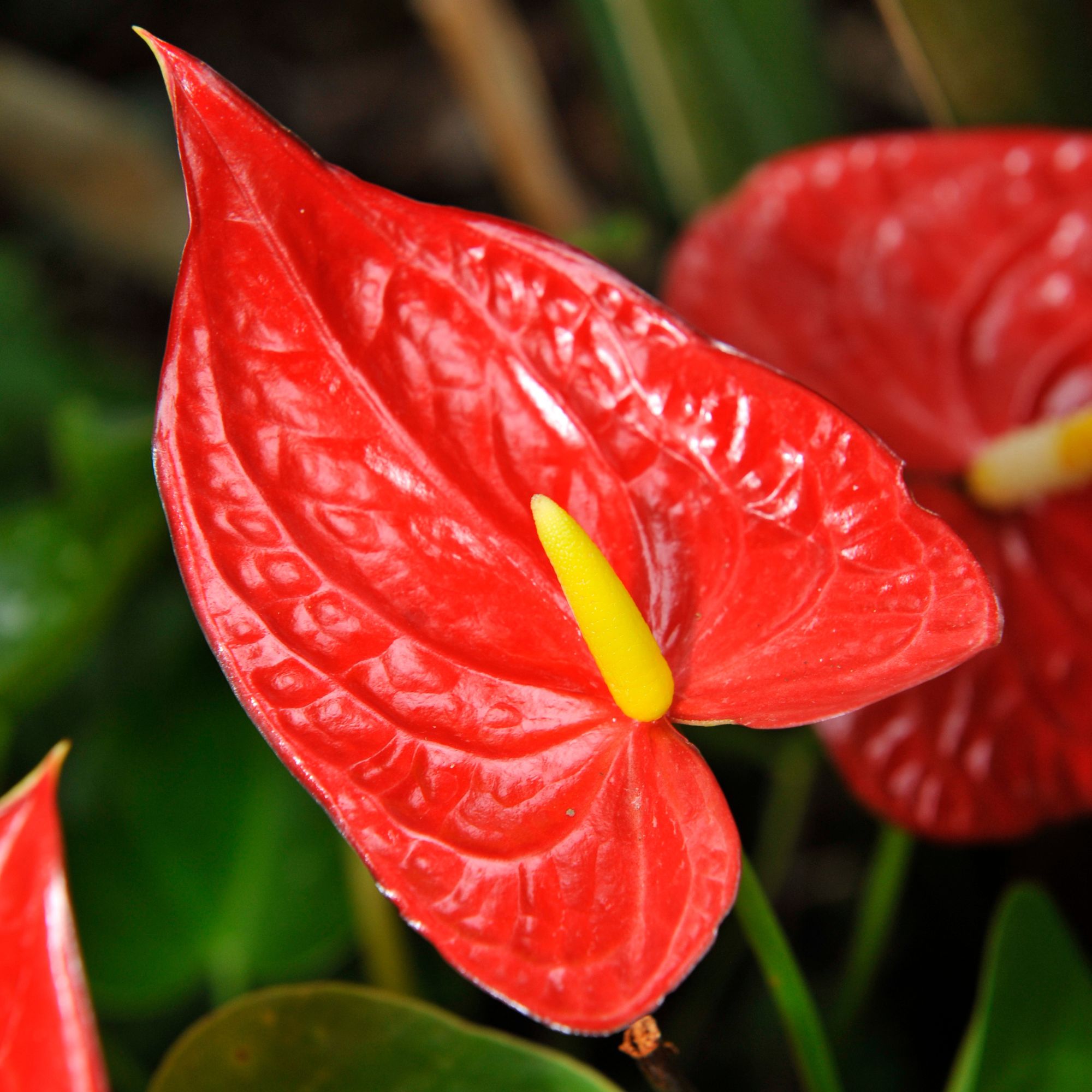
Where to place an anthurium plant
Flamingo flowers are a must when it comes to tropical decorating ideas. A true tropical beauty, it is native to the rainforests of Central and South America. ‘Like orchids and spider plants, flamingo flowers are epiphytes, so grow in the crevices of trees,’ says Richard Cale of Leaf Culture. This means they thrive in an environment replicating that warm, humid, shaded habitat.
‘Anthurium thrives in bright, indirect light and can withstand some direct light in the early morning and evening,’ explains Evie Brownlee of Grow Urban. An east-facing bathroom windowsill would be perfect.

Even if your home is on the darker side, this doesn’t prohibit you from enjoying the beauty of a flamingo flower. ‘An artificial grow light will help to supplement the anthurium’s light requirements. It can be a very effective method of growing your plants more quickly by simply extending the photosynthesis period. Try 10-12 hours and you’ll be amazed by how many flowers appear,’ suggests Richard Cale of Leaf Culture.
Ensuring the leaves are free from dust – wiping with a damp microfibre cloth – can also help to increase their photosynthesis, something that is essential if light levels are not ideal.
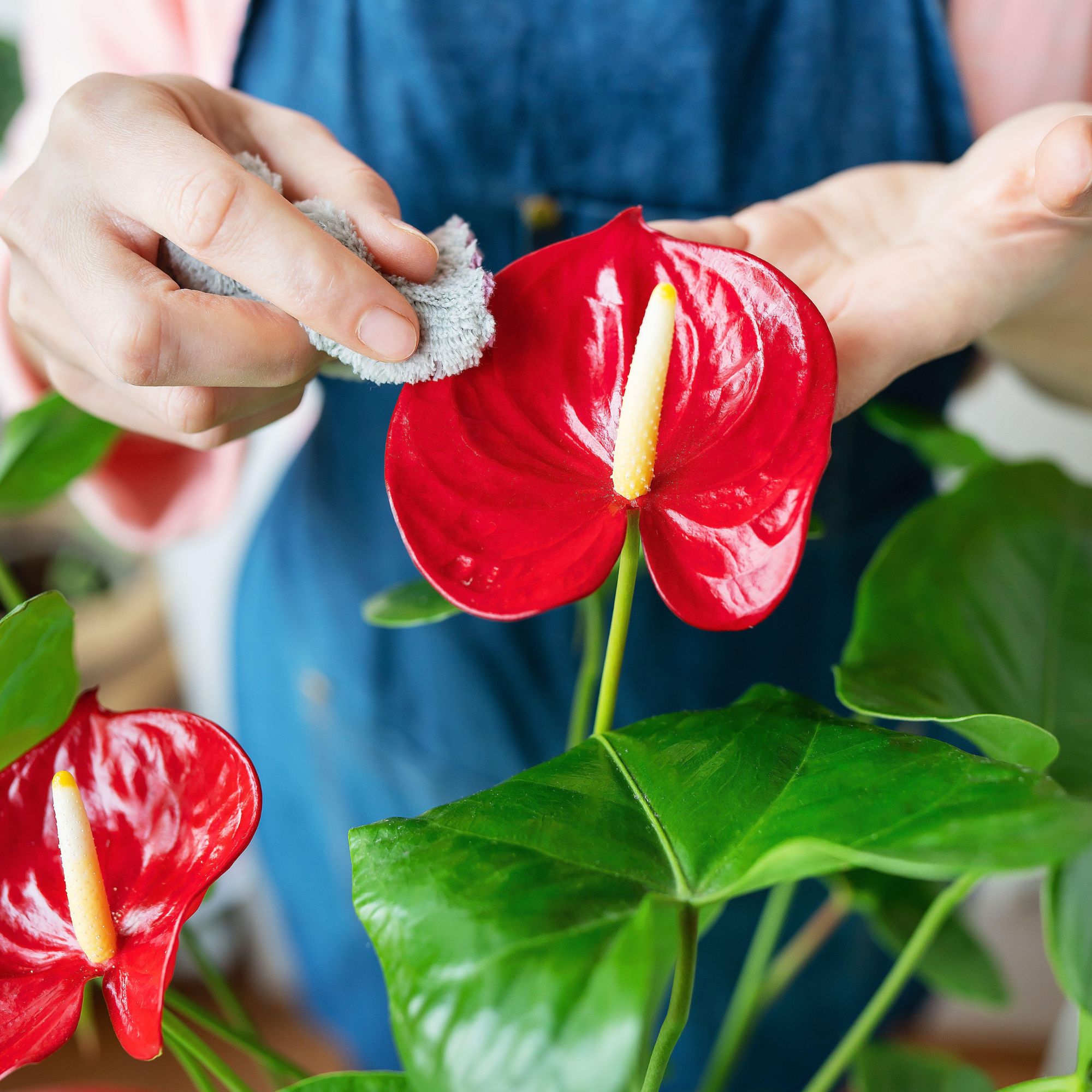
Before settling on a final spot, be sure it’s out of the reach of young children or pets, as flamingo flowers are toxic to humans and animals. If you are looking for houseplants to in a more accessible part of your home, look for pet-friendly houseplants instead.
How to water an anthurium
As with any houseplant, watering should be done in response to the plant’s needs. Always test the soil with a finger or moisture meter before watering to confirm the soil is dry. This will help you avoid root rot.
‘Use room temperature water (ideally dechlorinated) or rainwater. Water the plant from the base – this means sitting it in a tray of water, leaving overnight and discarding the remaining water in the morning,’ says Richard Cale of Leaf Culture.
Rainwater is the best option for watering most houseplants and installing a water butt but can prove invaluable.
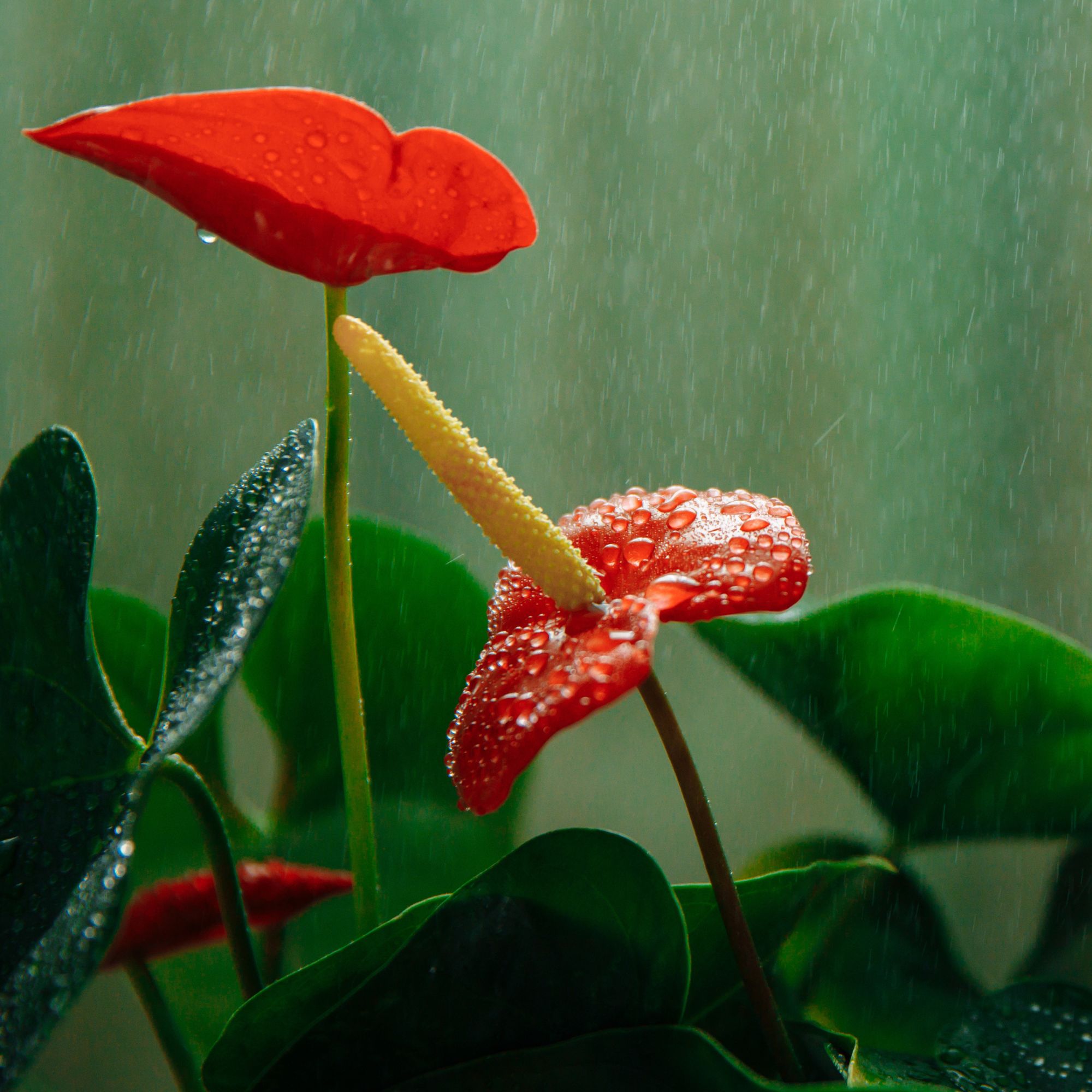
Should you feed an anthurium
‘Feed your anthurium regularly throughout the growing season, from April to October. A plant food that is high in phosphorus will promote flowering, while one that’s high in nitrogen will promote more green vegetative leafy growth,’ explains Kelly Dyer, horticultural lead at Patch Plants.
Does an anthurium need pruning?
Although anthuriums don’t need pruning to their control size or to promote growth, they do benefit from the removal of dead stems as and when they appear. ‘Anthuriums’ waxy flowers die back as a natural part of their life cycle. When the bloom dies back cut it off with clean, sharp scissors,’ advises Evie Brownlee of Grow Urban.
Doing this will remove the unsightly wilting flowers and will redirect the plant’s energy from seed production to creating new growth. Using clean garden tools will reduce the risk of bacteria and disease from affecting your plant.
If you don’t wish to propagate, then it is also a good idea to prune any suckers that appear at the base of the plant. This will ensure that all the energy is focused on the main plant rather than supporting a second one.
When pruning, ensure you always wear gloves as the toxic sap can cause skin irritations.
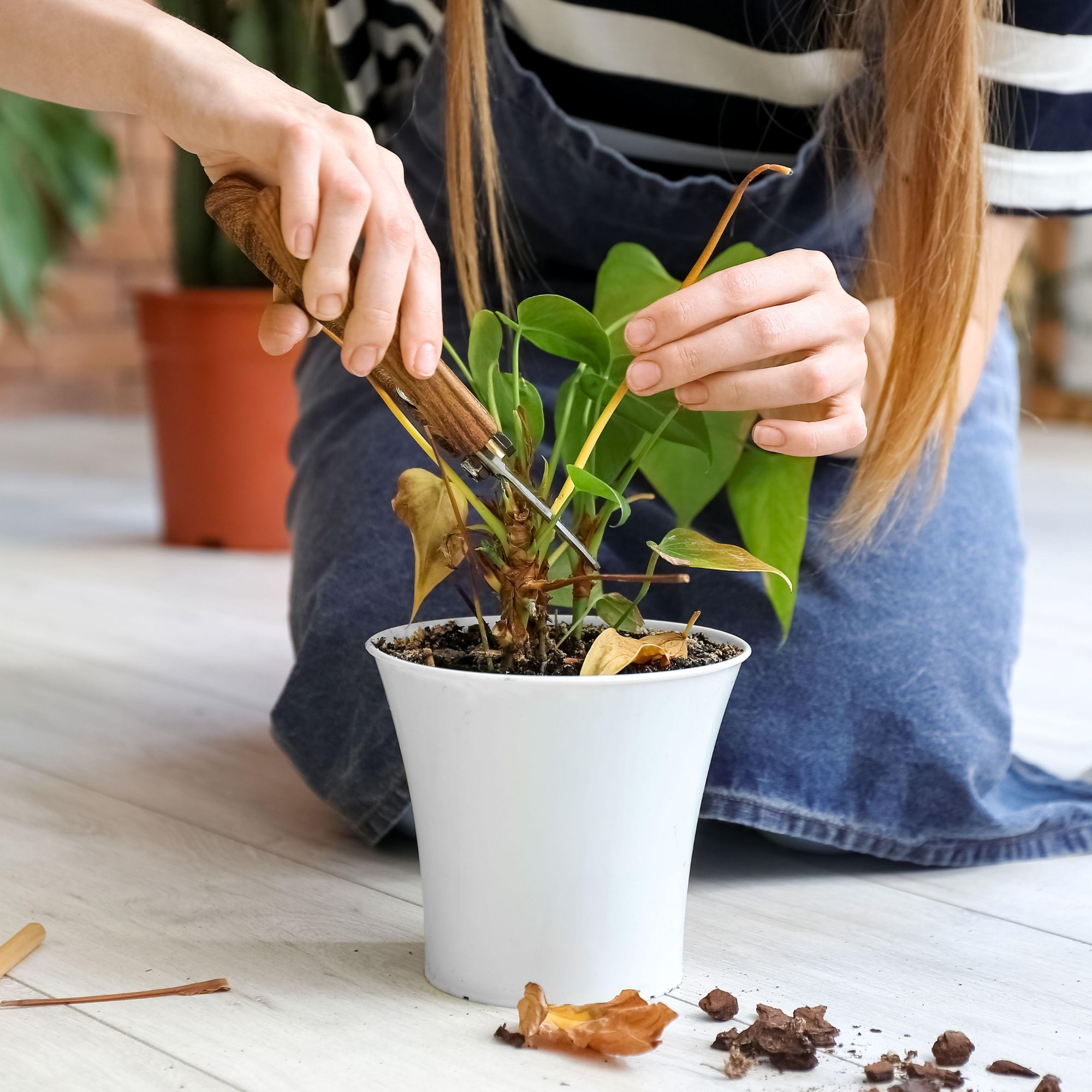
FAQs
What to do when Anthurium leaves turn yellow?
Anthurium leaves turning yellow ‘indicates that the plant has run out of nutrients or space, or is overwatered,’ says Evie Brownlee of Grow Urban. To fix, adjust the watering frequency – testing the soil to ensure it is dry before watering – and repot the plant with fresh compost, using a larger pot if the plant appears root-bound. Adding a regular feed with a high nitrogen plant food will promote green leafy growth.
How to get rid of bugs on anthurium?
If you've spotted bugs or pests on your anthurium, you'll be glad to know that it's easily solved. 'Some common pests that may affect Anthuriums include spider mites, aphids, and mealybugs,' says Richard Cale, owner of Leaf Culture.
'If you notice any signs of pest activity, such as webbing, tiny insects, or yellowing leaves, isolate the affected plant and treat it with one drop of washing up liquid in a spray bottle filled with water. Give the bottle a shake and spray liberally all over and under the leaves. Reapply a week later (if you feel it’s still an issue) but any pests by then should be long gone.'
What is the best compost for anthuriums?
A well-draining compost, that is slightly on the acidic side (5.5 to 6.5pH), mixed with orchid bark is the best compost for anthuriums. Alternatively, try this ready-made Anthurium potting mix from Grow Tropicals.
How do you keep an anthurium upright?
‘To help support your anthurium further, prop a small pole or trellis in the soil to give it a foundation to grow on and sprout its impressive hues,’ says Matt Lindsay, director and general manager at Growing Revolution.
This pink houseplant is the perfect colourful addition to any houseplant collection.







